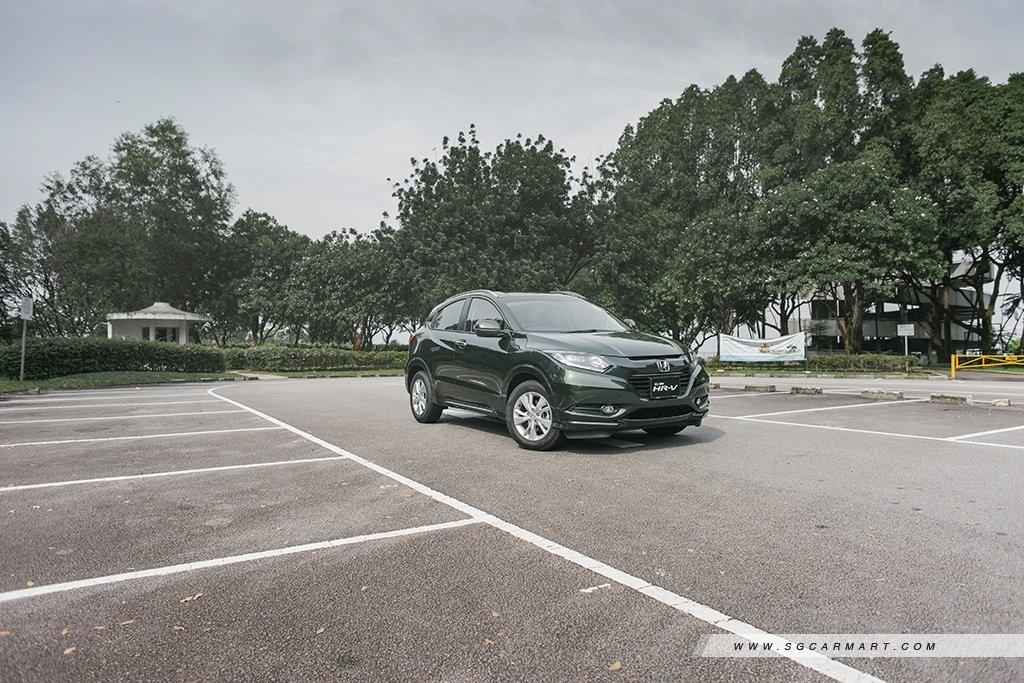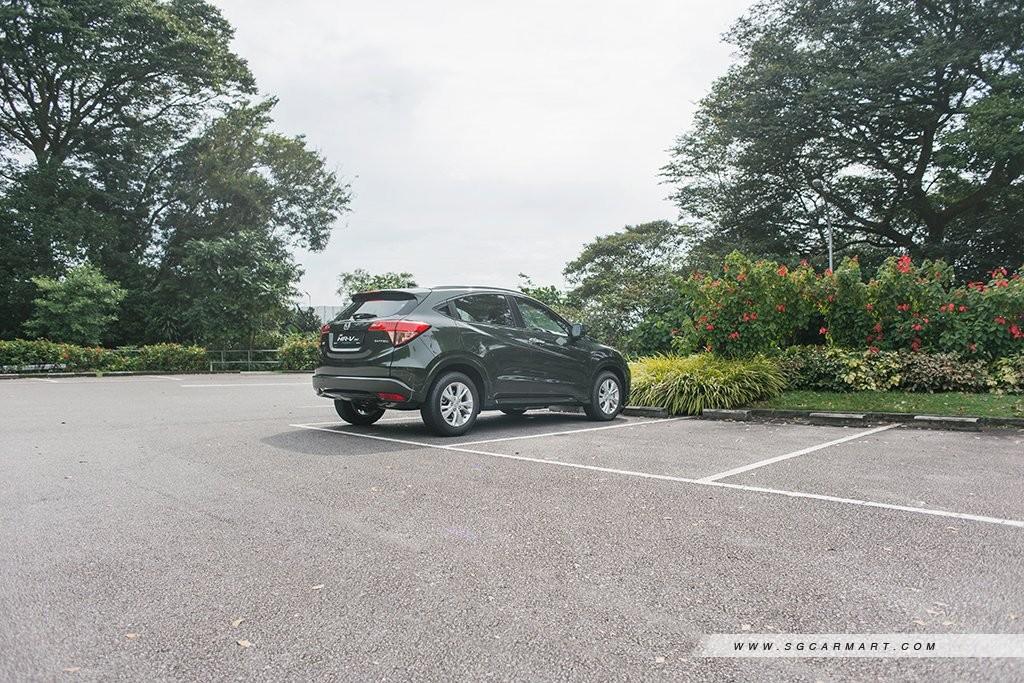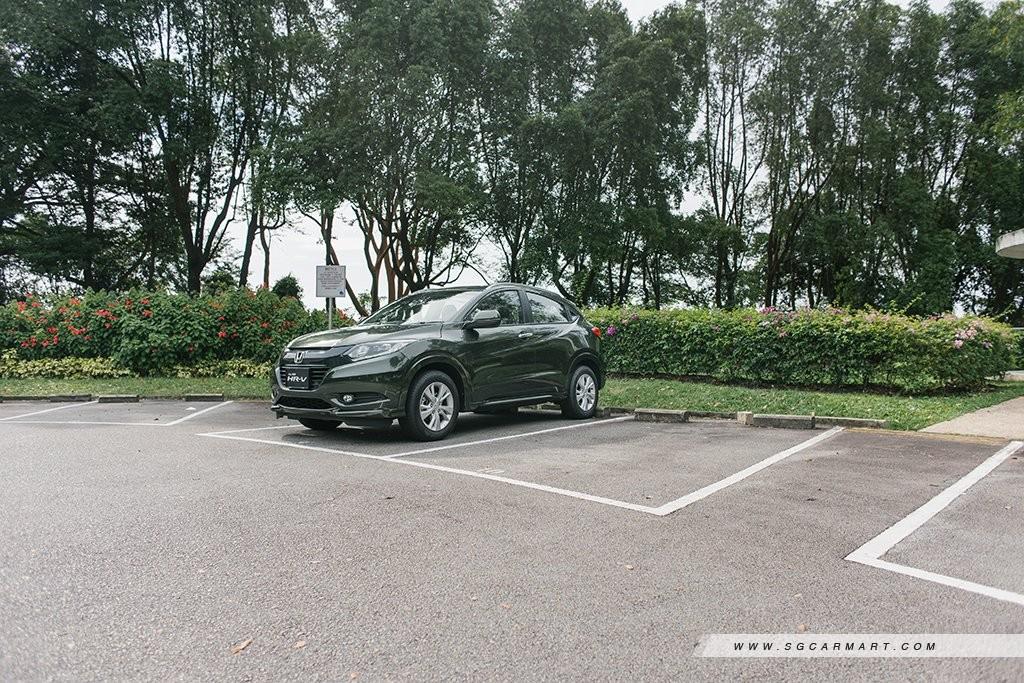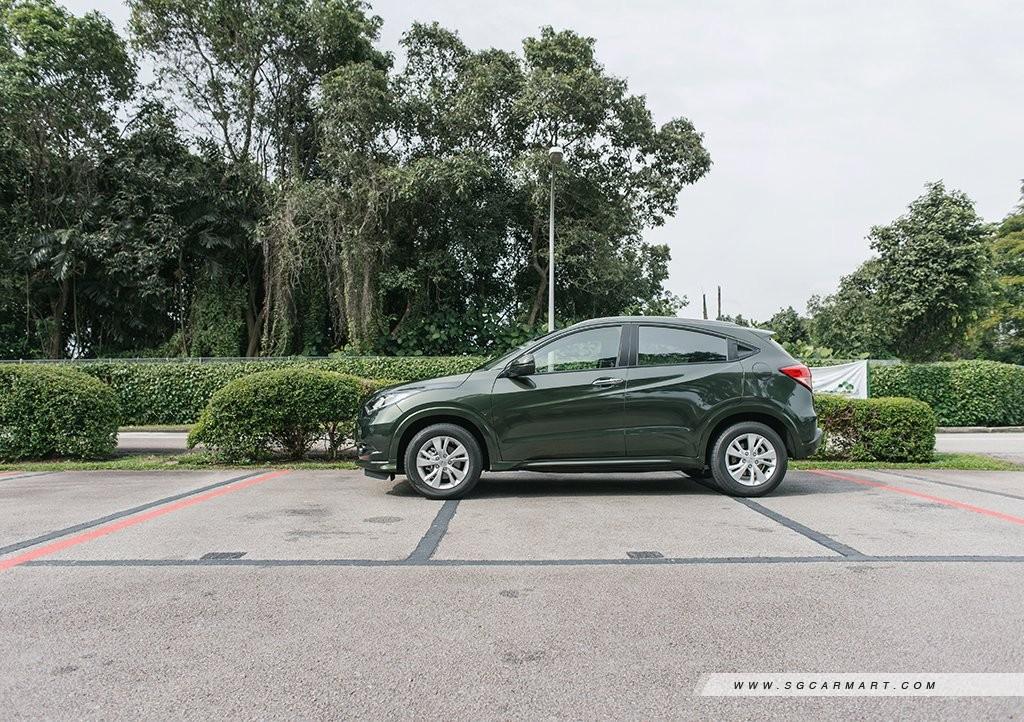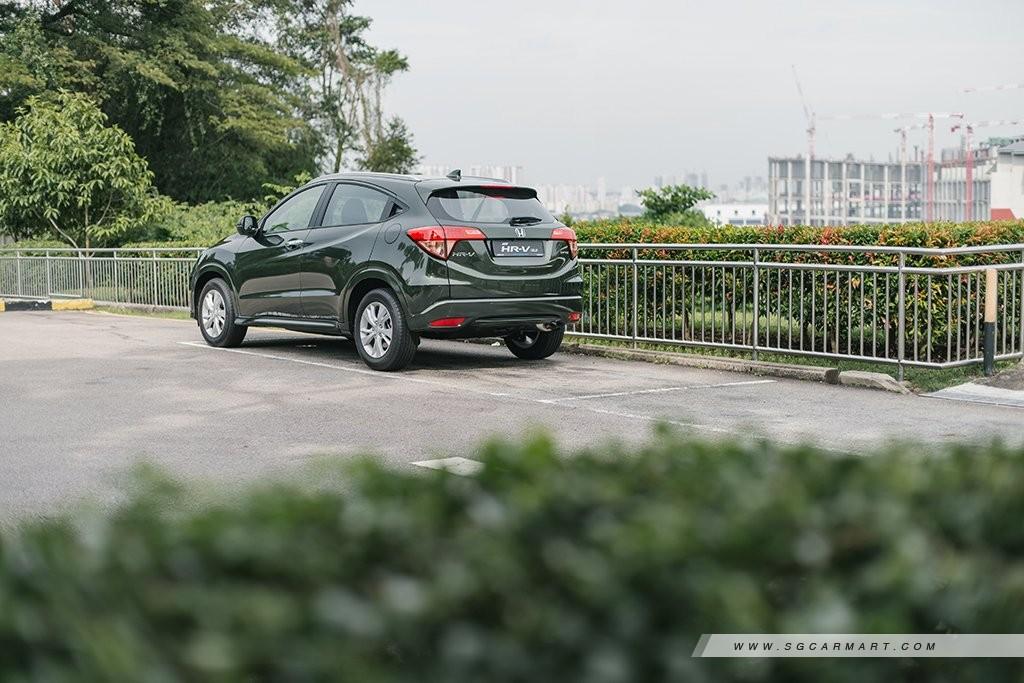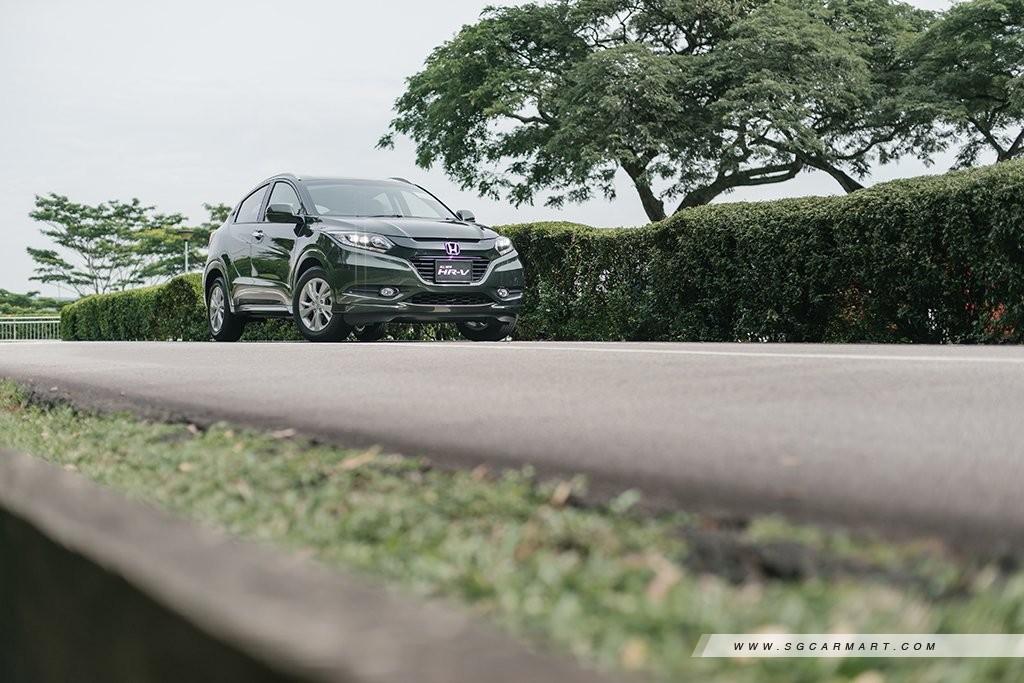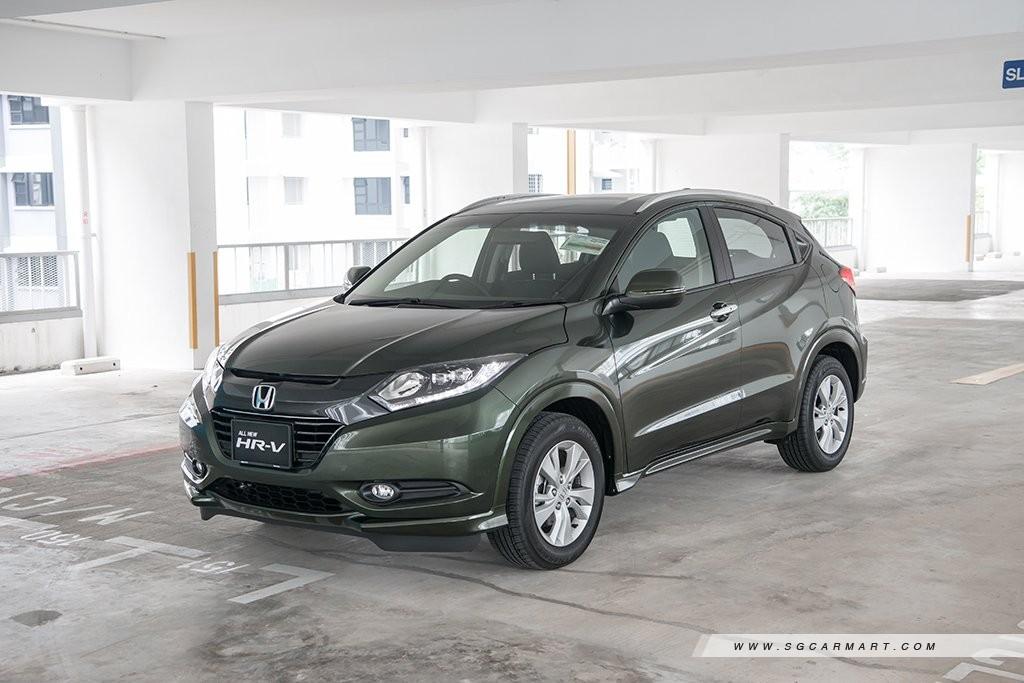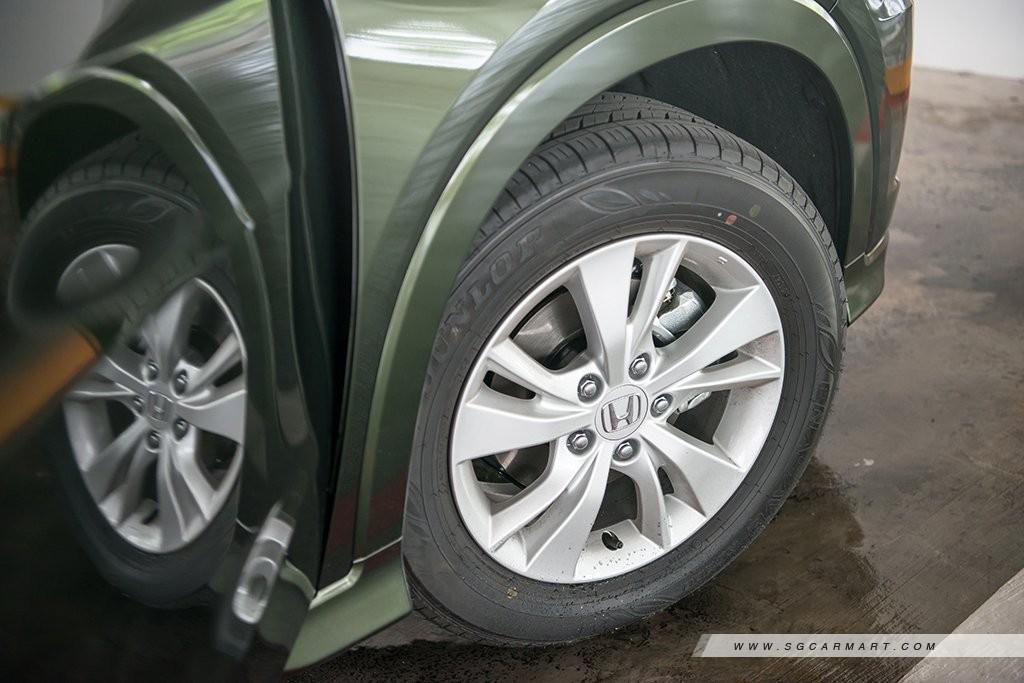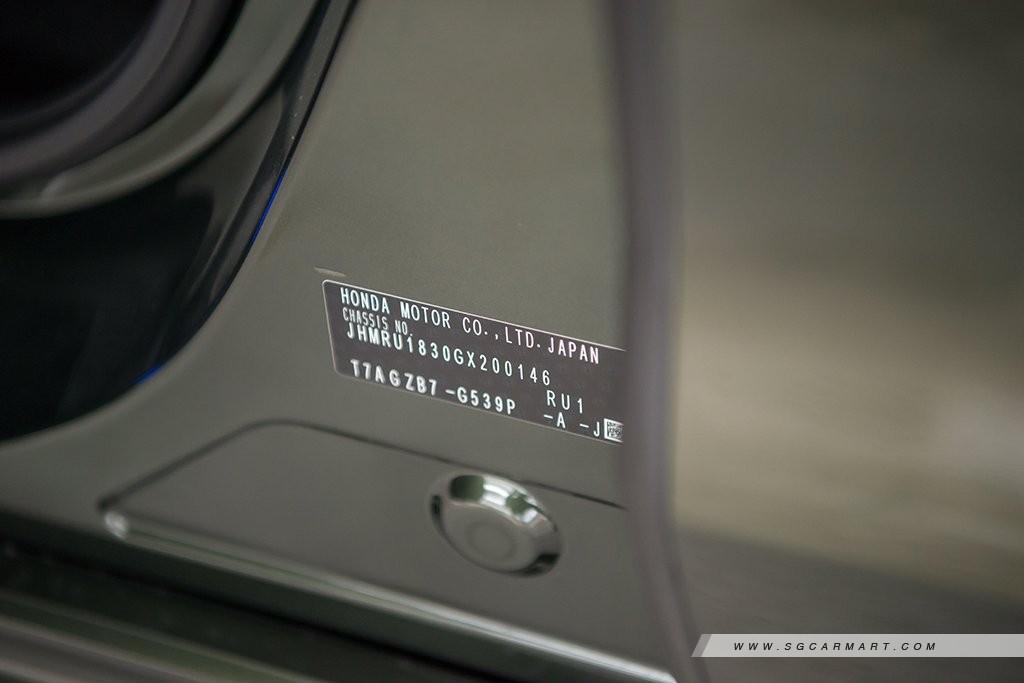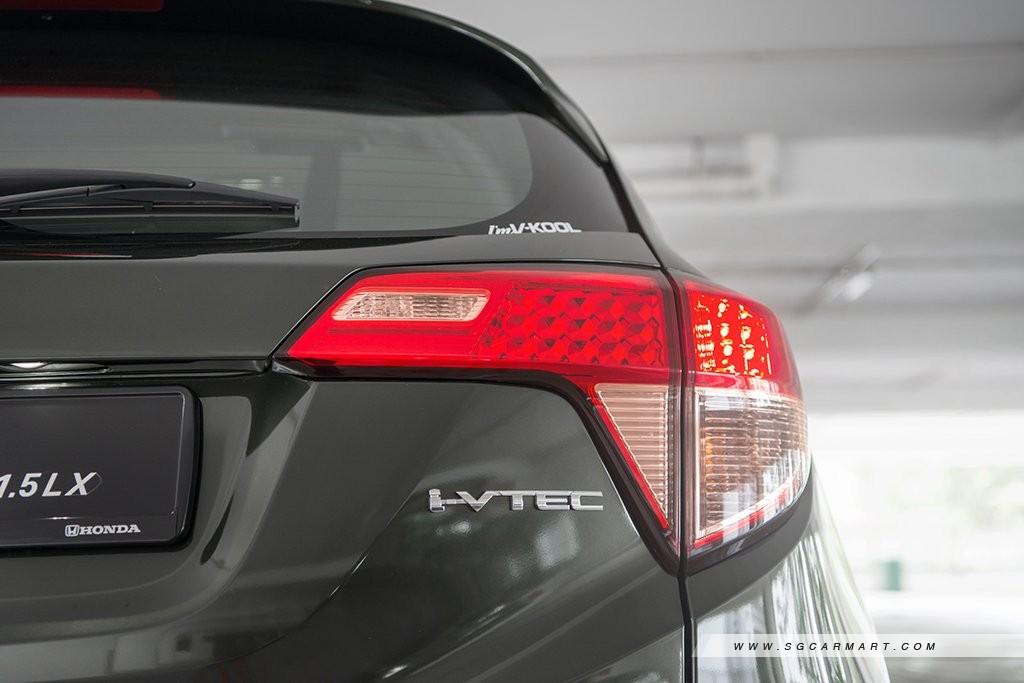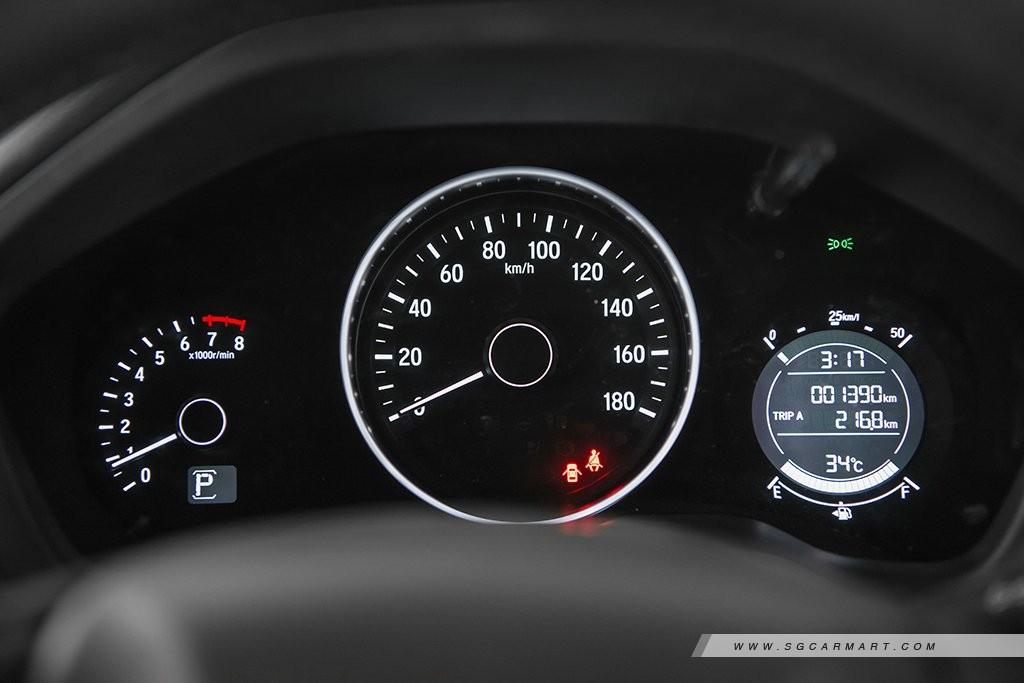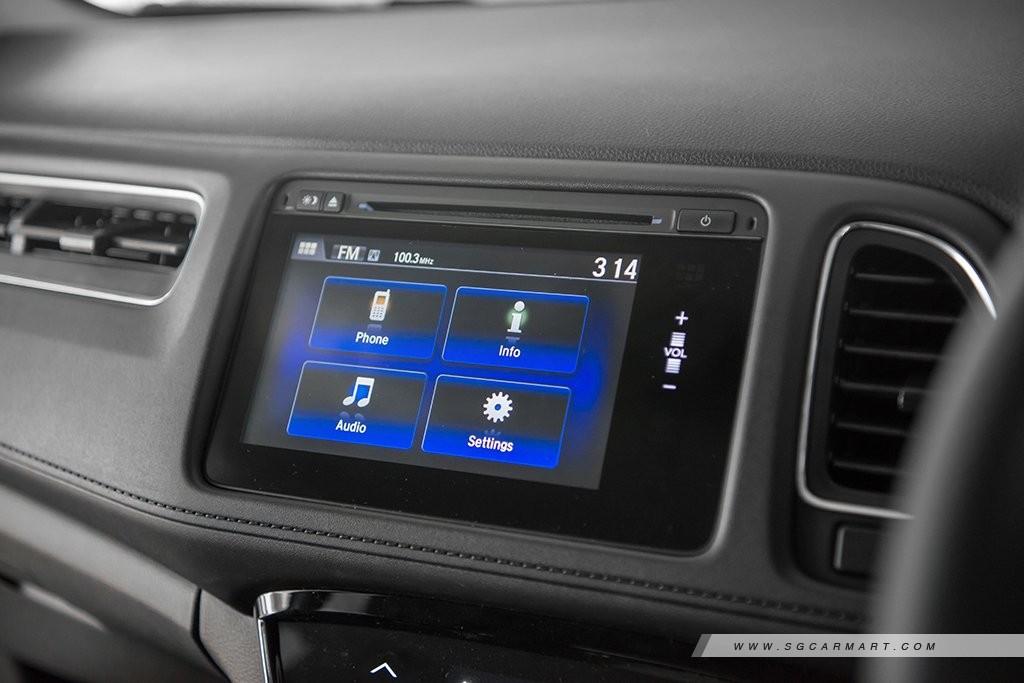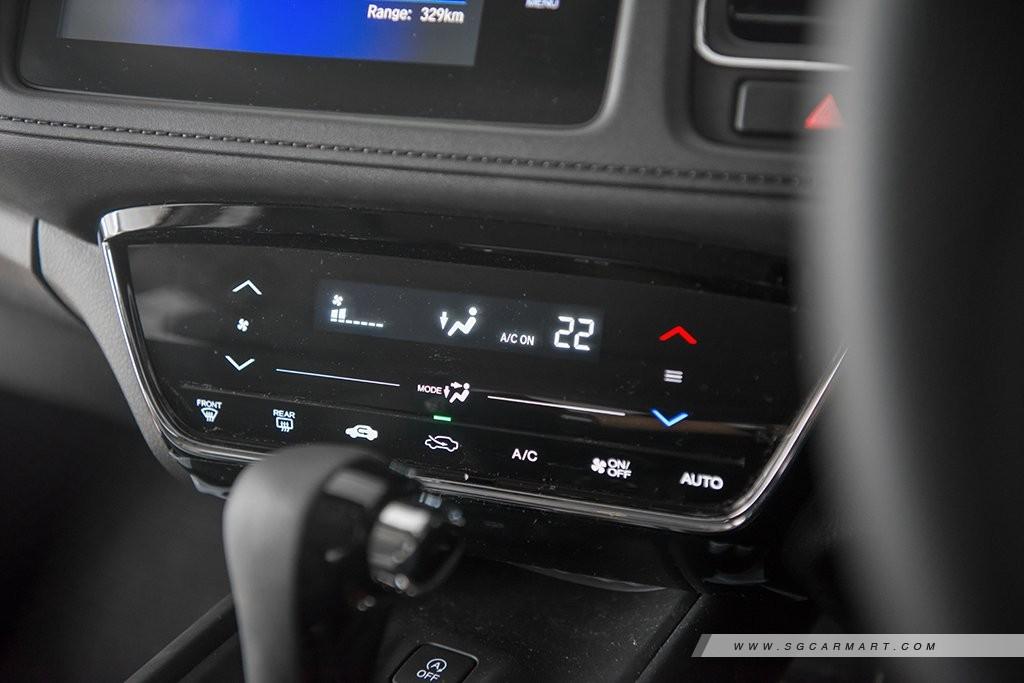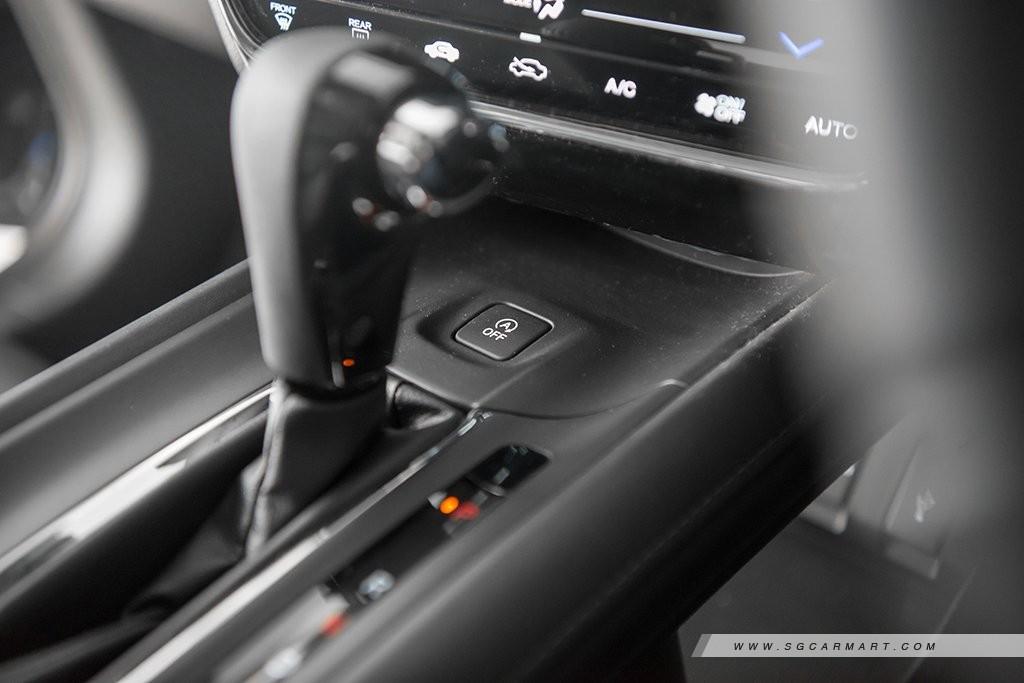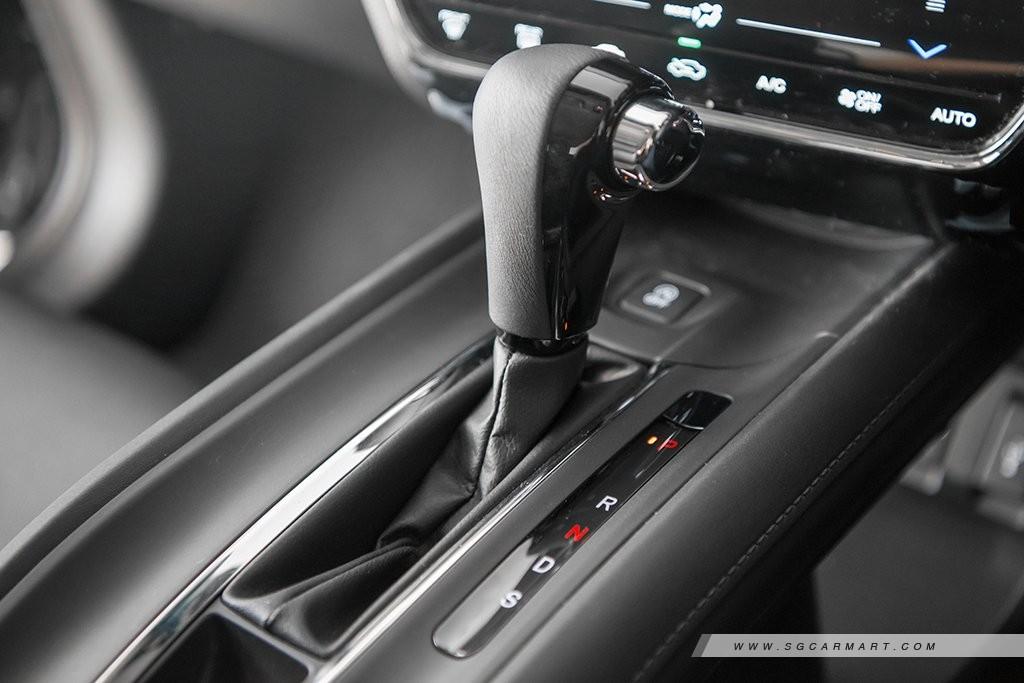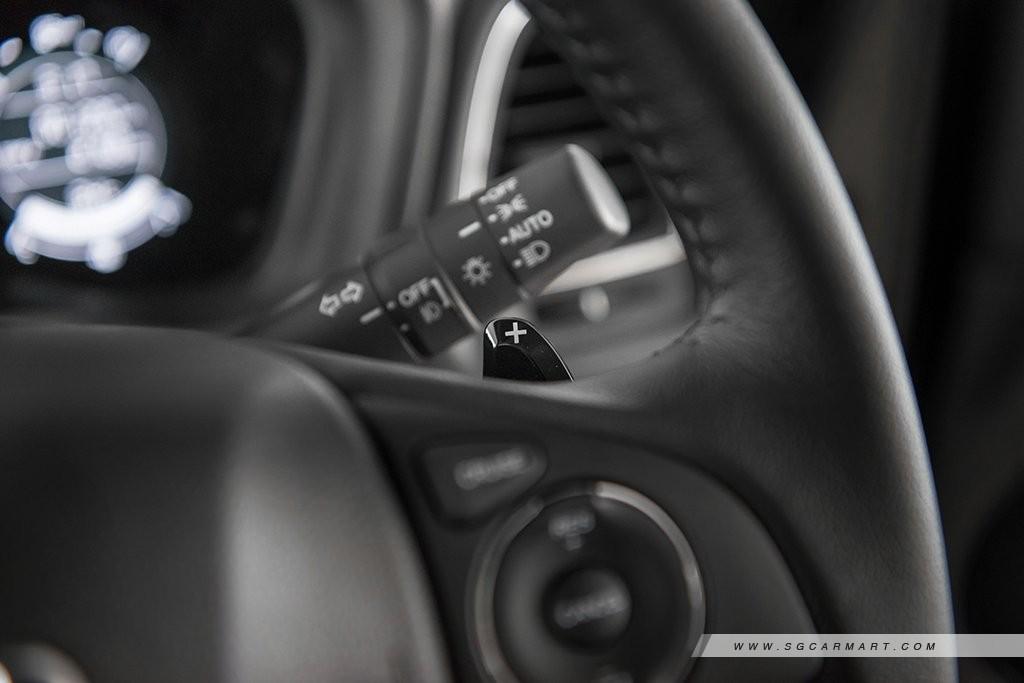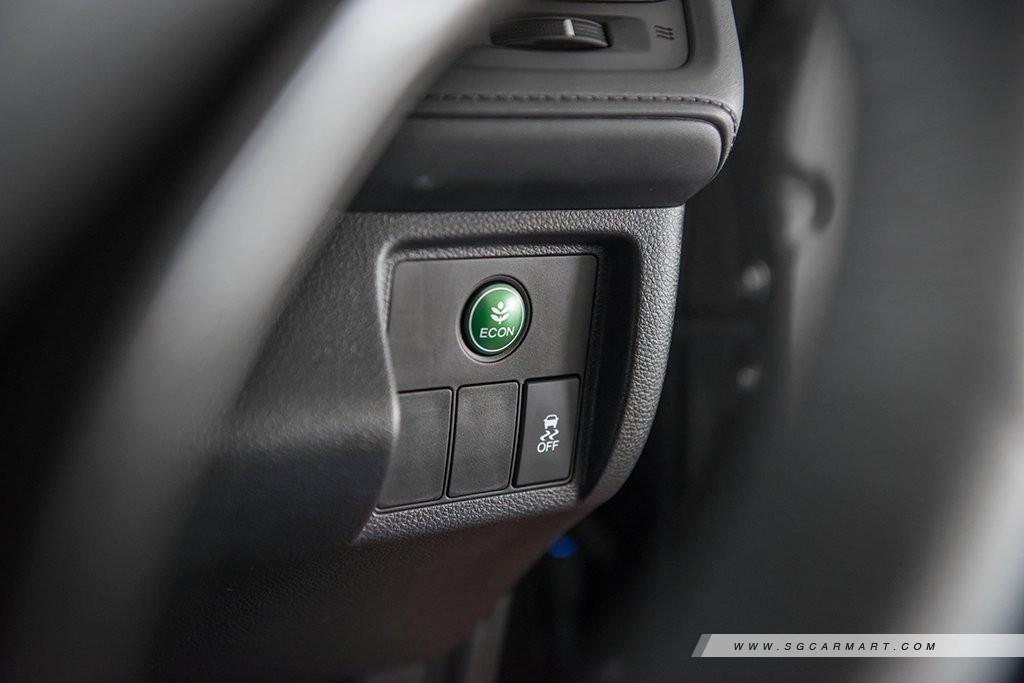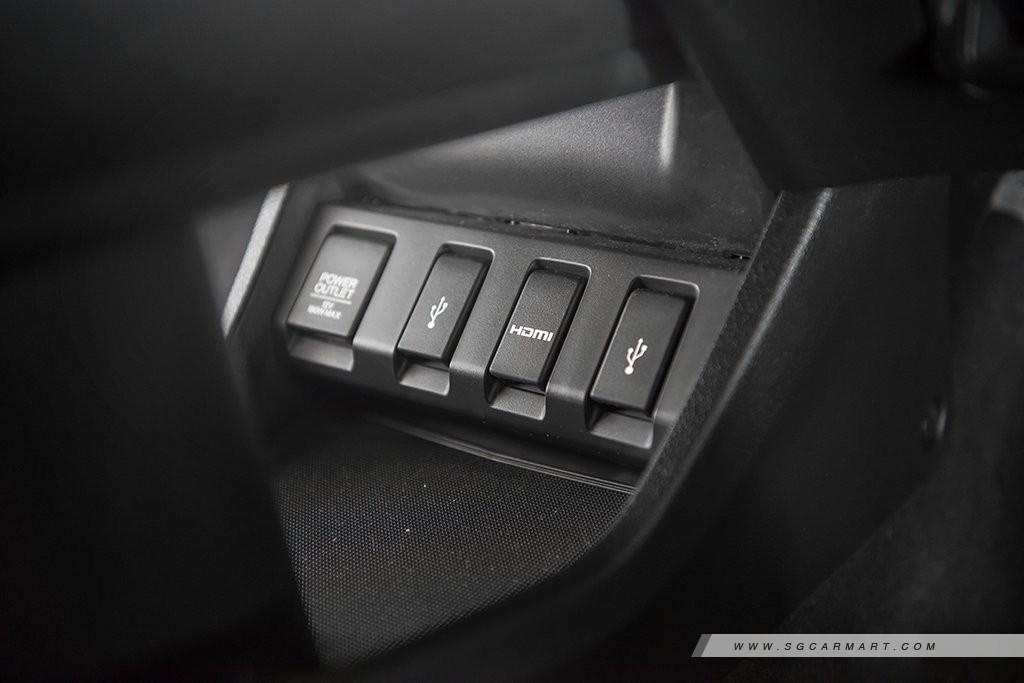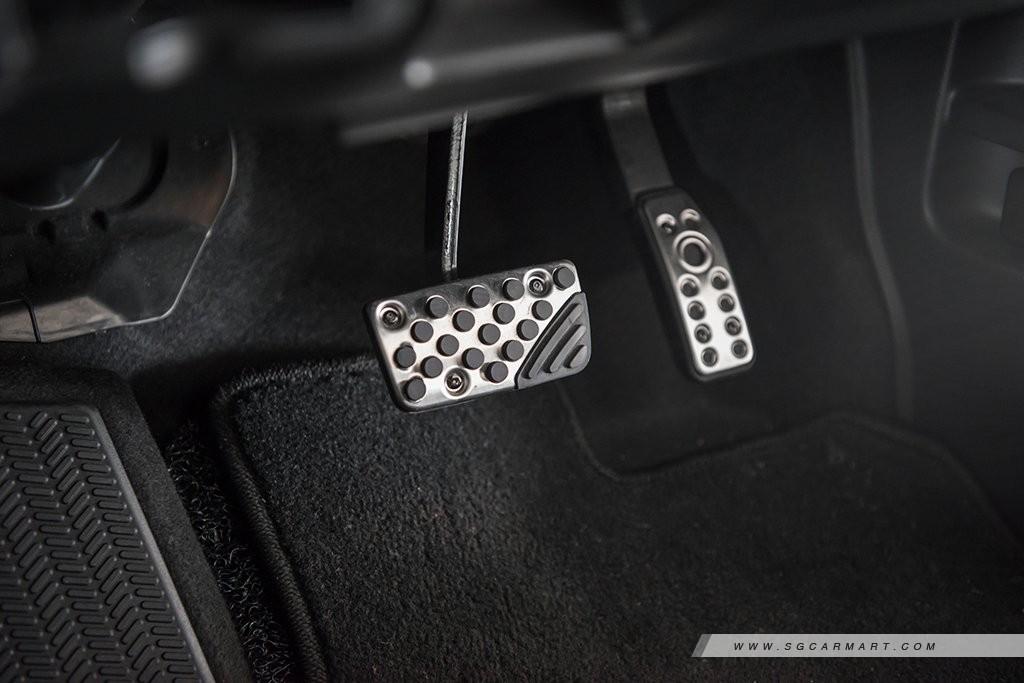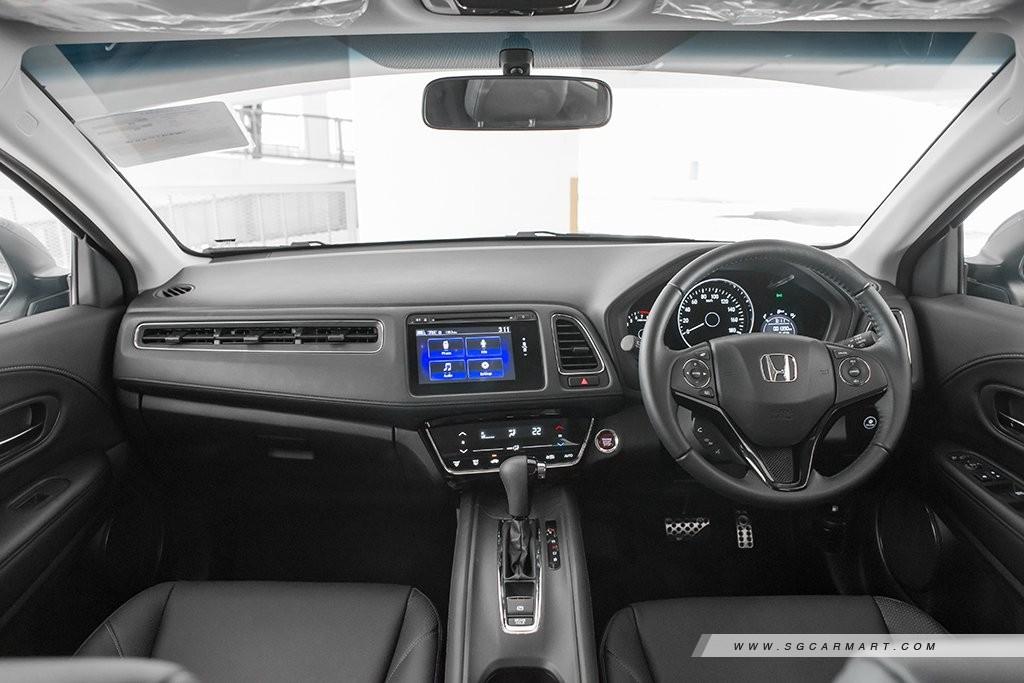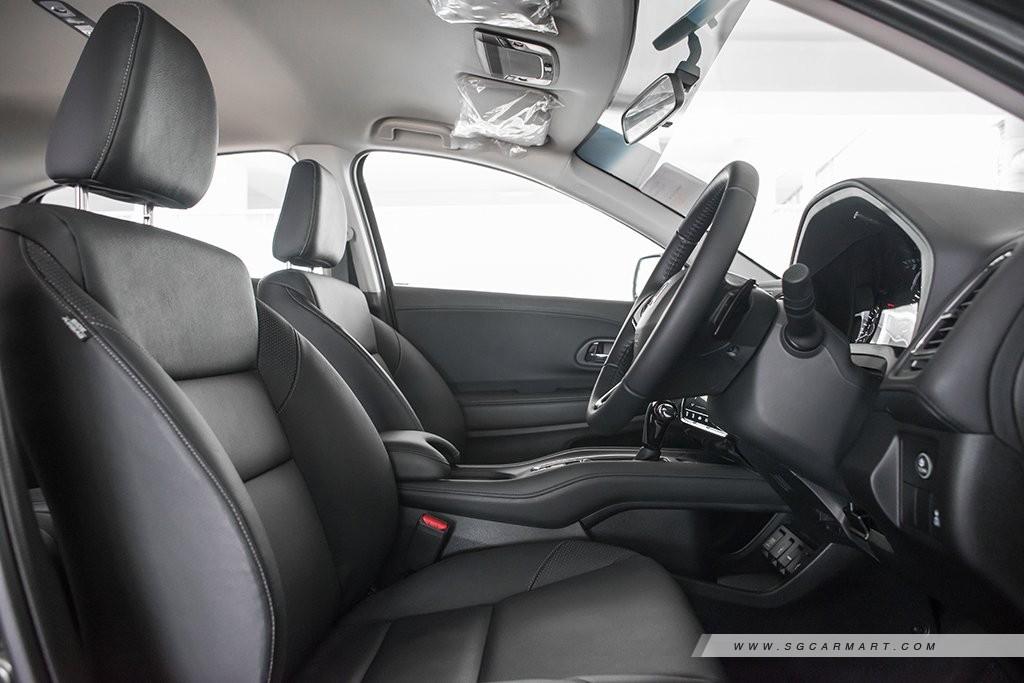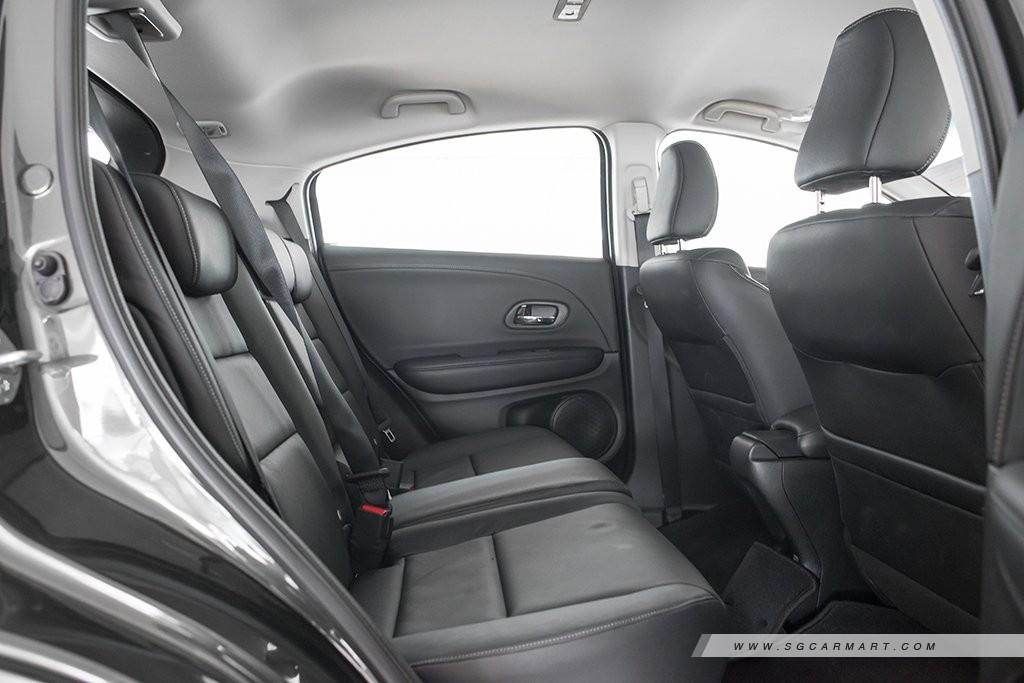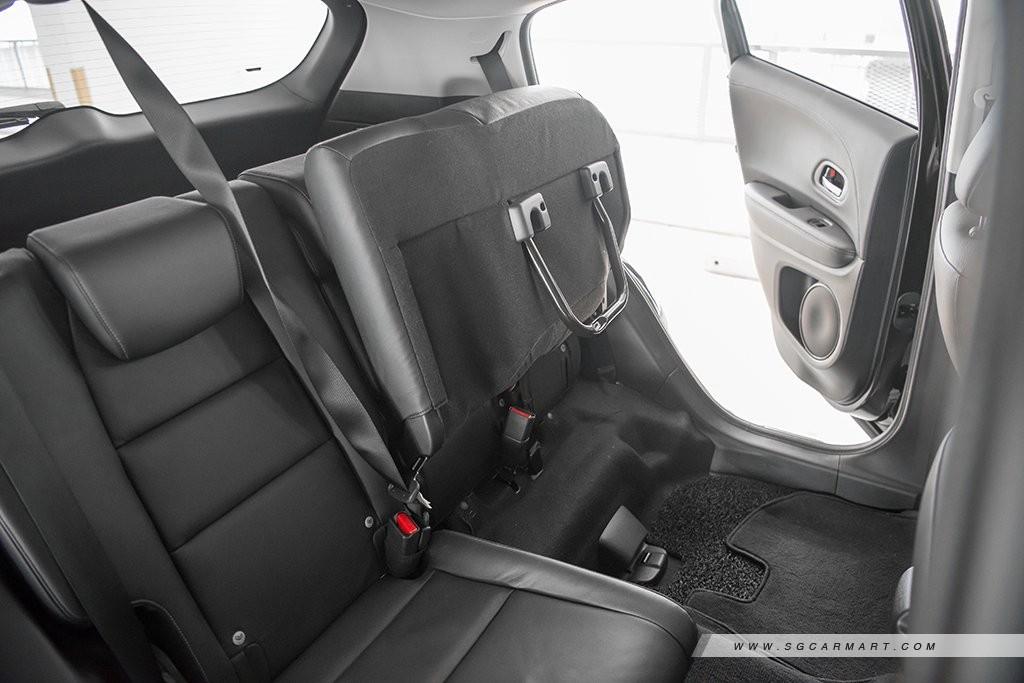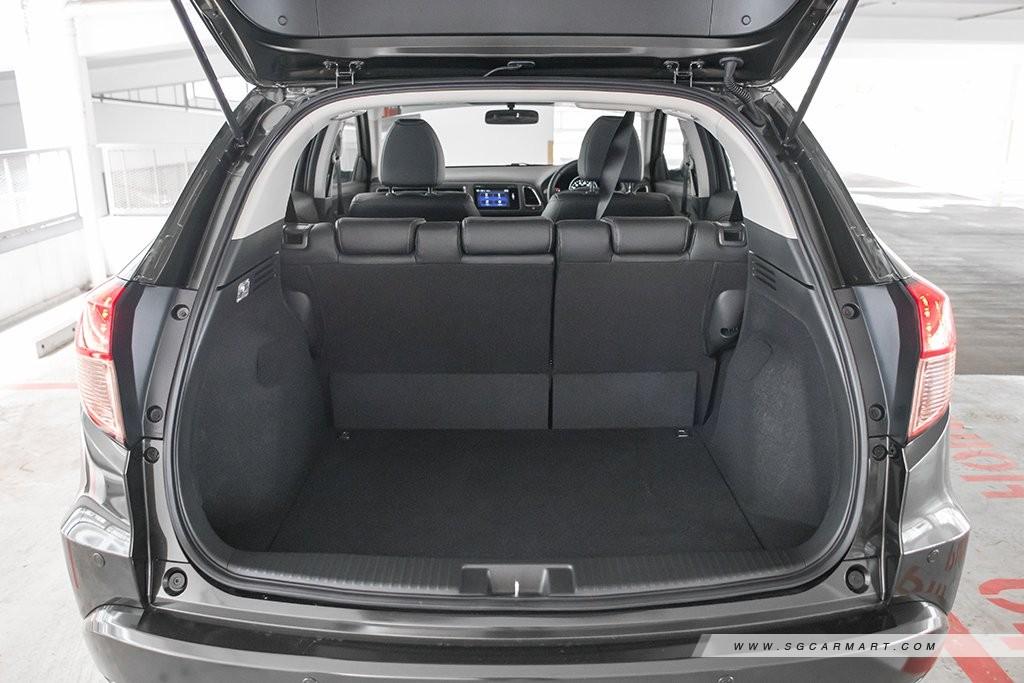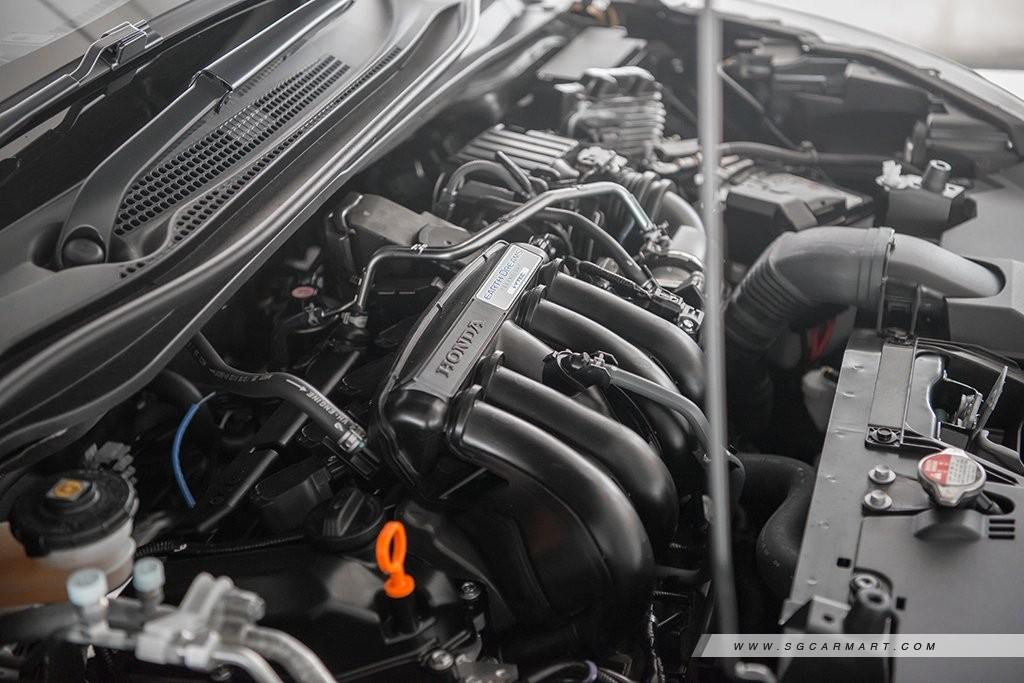Honda HR-V 1.5 LX (A) Facelift Review
05 Oct 2016|34,366 views
Based on the same underpinnings as the extremely popular Jazz hatchback, the Honda HR-V or Vezel as it is known in the Japanese market, is a small Sport Utility Vehicle (SUV) that has the ability to squeeze through tight urban confines, while giving the impression of roominess on the inside. It rivals other subcompacts like the Mazda CX-3, and the 'polarising' Nissan Juke, and appeals to the younger set with its sleek and trendy design.
The facelifted version you see here in Misty Green Pearl doesn't look much different from the 2015 HR-V, it is however a whole new car, literally. Unlike the built-in Thailand HR-V of 2015, which was equipped with a SOHC engine, Kah Motor has decided to go to the original source for its replacement. This time, built in Japan and featuring a 1.5-litre DOHC engine, the facelifted HR-V is now more powerful and more economical than the one it replaces.
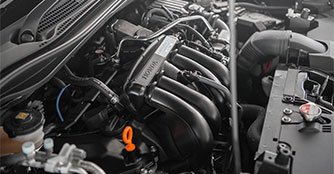
 Compared to the Thailand-made HR-V, the facelifted made-in-Japan version produces 10 more horses and 10Nm of torque
Compared to the Thailand-made HR-V, the facelifted made-in-Japan version produces 10 more horses and 10Nm of torque
Give us the numbers then
The latest HR-V now produces 130bhp at 6,600rpm and 155Nm of torque from 4,600rpm, compared to the previous Thai-made's 120bhp and 145Nm. This translates to a more energetic and responsive drive.
On paper, the car has a 0-100km/h timing of 11.8 seconds, and a top speed of 181km/h. It may not make you squeal around corners, but taking the HR-V around spirited bends won't put you to sleep either.
What do I look out for in the facelifted model?
Instead of halogen headlamps, the facelifted HR-V now boasts LED ones, as well as daytime running lights which have made their way to the mainstream. Unlike the lower grade DX variant, the higher grade LX variant that you see here comes standard with body-coloured bumpers, wheel arches and chrome roof rails.
Instead of offering both the DX and LX variants, Kah Motor has decided that the LX is the only one you will need. This is because the LX variant comes with more air bags - front, side and curtain - as compared to the two front airbags found in the Thai-made version and lower DX trim.
The facelifted version you see here in Misty Green Pearl doesn't look much different from the 2015 HR-V, it is however a whole new car, literally. Unlike the built-in Thailand HR-V of 2015, which was equipped with a SOHC engine, Kah Motor has decided to go to the original source for its replacement. This time, built in Japan and featuring a 1.5-litre DOHC engine, the facelifted HR-V is now more powerful and more economical than the one it replaces.

Give us the numbers then
The latest HR-V now produces 130bhp at 6,600rpm and 155Nm of torque from 4,600rpm, compared to the previous Thai-made's 120bhp and 145Nm. This translates to a more energetic and responsive drive.
On paper, the car has a 0-100km/h timing of 11.8 seconds, and a top speed of 181km/h. It may not make you squeal around corners, but taking the HR-V around spirited bends won't put you to sleep either.
What do I look out for in the facelifted model?
Instead of halogen headlamps, the facelifted HR-V now boasts LED ones, as well as daytime running lights which have made their way to the mainstream. Unlike the lower grade DX variant, the higher grade LX variant that you see here comes standard with body-coloured bumpers, wheel arches and chrome roof rails.
Instead of offering both the DX and LX variants, Kah Motor has decided that the LX is the only one you will need. This is because the LX variant comes with more air bags - front, side and curtain - as compared to the two front airbags found in the Thai-made version and lower DX trim.
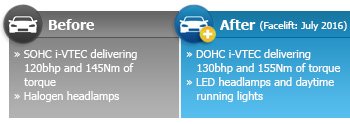 |
Is it as stylish as it is practical?
Seen from the side, the HR-V's sloping roofline gives it a coupe-like silhouette. In what is perhaps the most blatant sign of the design team's commitment to hitting coupe lovers' sweet spots, the HR-V bears concealed rear door handles that are tucked neatly into the rear window panes.
While the handles need a little getting used to - especially when it comes to manoeuvring with arms full of groceries - the HR-V's designers get points for even considering that four conventional door handles might jar prospective drivers who equate sportiness with two doors.
Aesthetics aside, Honda also deserves kudos for the utility it has managed to wring out of this model. The HR-V's strongest selling point, its five-seat capacity, has different set-up modes designed to accommodate the flotsam of real life.
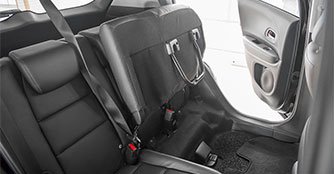
How does it drive?
Going over uneven roads and Singapore's numerous humps, and it sometimes feels like you're in sports car. This isn't particularly complimentary, as you'd expect much more refinement and comfort from an SUV.
Some may consider the ride the HR-V provides as offensive (for an SUV), but others will enjoy the hard-edge type of driving that comes with a honest-to-goodness Honda.
The jazzed-up facelifted HR-V does a good job scooting people and cargo around. But we can't help but wonder, what it would be like if it had the Civic's 1.5 VTEC turbocharged engine instead.
Based on the same underpinnings as the extremely popular Jazz hatchback, the Honda HR-V or Vezel as it is known in the Japanese market, is a small Sport Utility Vehicle (SUV) that has the ability to squeeze through tight urban confines, while giving the impression of roominess on the inside. It rivals other subcompacts like the Mazda CX-3, and the 'polarising' Nissan Juke, and appeals to the younger set with its sleek and trendy design.
The facelifted version you see here in Misty Green Pearl doesn't look much different from the 2015 HR-V, it is however a whole new car, literally. Unlike the built-in Thailand HR-V of 2015, which was equipped with a SOHC engine, Kah Motor has decided to go to the original source for its replacement. This time, built in Japan and featuring a 1.5-litre DOHC engine, the facelifted HR-V is now more powerful and more economical than the one it replaces.
Give us the numbers then
The latest HR-V now produces 130bhp at 6,600rpm and 155Nm of torque from 4,600rpm, compared to the previous Thai-made's 120bhp and 145Nm. This translates to a more energetic and responsive drive.
On paper, the car has a 0-100km/h timing of 11.8 seconds, and a top speed of 181km/h. It may not make you squeal around corners, but taking the HR-V around spirited bends won't put you to sleep either.
What do I look out for in the facelifted model?
Instead of halogen headlamps, the facelifted HR-V now boasts LED ones, as well as daytime running lights which have made their way to the mainstream. Unlike the lower grade DX variant, the higher grade LX variant that you see here comes standard with body-coloured bumpers, wheel arches and chrome roof rails.
Instead of offering both the DX and LX variants, Kah Motor has decided that the LX is the only one you will need. This is because the LX variant comes with more air bags - front, side and curtain - as compared to the two front airbags found in the Thai-made version and lower DX trim.
The facelifted version you see here in Misty Green Pearl doesn't look much different from the 2015 HR-V, it is however a whole new car, literally. Unlike the built-in Thailand HR-V of 2015, which was equipped with a SOHC engine, Kah Motor has decided to go to the original source for its replacement. This time, built in Japan and featuring a 1.5-litre DOHC engine, the facelifted HR-V is now more powerful and more economical than the one it replaces.
Give us the numbers then
The latest HR-V now produces 130bhp at 6,600rpm and 155Nm of torque from 4,600rpm, compared to the previous Thai-made's 120bhp and 145Nm. This translates to a more energetic and responsive drive.
On paper, the car has a 0-100km/h timing of 11.8 seconds, and a top speed of 181km/h. It may not make you squeal around corners, but taking the HR-V around spirited bends won't put you to sleep either.
What do I look out for in the facelifted model?
Instead of halogen headlamps, the facelifted HR-V now boasts LED ones, as well as daytime running lights which have made their way to the mainstream. Unlike the lower grade DX variant, the higher grade LX variant that you see here comes standard with body-coloured bumpers, wheel arches and chrome roof rails.
Instead of offering both the DX and LX variants, Kah Motor has decided that the LX is the only one you will need. This is because the LX variant comes with more air bags - front, side and curtain - as compared to the two front airbags found in the Thai-made version and lower DX trim.
Is it as stylish as it is practical?
Seen from the side, the HR-V's sloping roofline gives it a coupe-like silhouette. In what is perhaps the most blatant sign of the design team's commitment to hitting coupe lovers' sweet spots, the HR-V bears concealed rear door handles that are tucked neatly into the rear window panes.
While the handles need a little getting used to - especially when it comes to manoeuvring with arms full of groceries - the HR-V's designers get points for even considering that four conventional door handles might jar prospective drivers who equate sportiness with two doors.
Aesthetics aside, Honda also deserves kudos for the utility it has managed to wring out of this model. The HR-V's strongest selling point, its five-seat capacity, has different set-up modes designed to accommodate the flotsam of real life.
How does it drive?
Going over uneven roads and Singapore's numerous humps, and it sometimes feels like you're in sports car. This isn't particularly complimentary, as you'd expect much more refinement and comfort from an SUV.
Some may consider the ride the HR-V provides as offensive (for an SUV), but others will enjoy the hard-edge type of driving that comes with a honest-to-goodness Honda.
The jazzed-up facelifted HR-V does a good job scooting people and cargo around. But we can't help but wonder, what it would be like if it had the Civic's 1.5 VTEC turbocharged engine instead.
Seen from the side, the HR-V's sloping roofline gives it a coupe-like silhouette. In what is perhaps the most blatant sign of the design team's commitment to hitting coupe lovers' sweet spots, the HR-V bears concealed rear door handles that are tucked neatly into the rear window panes.
While the handles need a little getting used to - especially when it comes to manoeuvring with arms full of groceries - the HR-V's designers get points for even considering that four conventional door handles might jar prospective drivers who equate sportiness with two doors.
Aesthetics aside, Honda also deserves kudos for the utility it has managed to wring out of this model. The HR-V's strongest selling point, its five-seat capacity, has different set-up modes designed to accommodate the flotsam of real life.
How does it drive?
Going over uneven roads and Singapore's numerous humps, and it sometimes feels like you're in sports car. This isn't particularly complimentary, as you'd expect much more refinement and comfort from an SUV.
Some may consider the ride the HR-V provides as offensive (for an SUV), but others will enjoy the hard-edge type of driving that comes with a honest-to-goodness Honda.
The jazzed-up facelifted HR-V does a good job scooting people and cargo around. But we can't help but wonder, what it would be like if it had the Civic's 1.5 VTEC turbocharged engine instead.
Also read our comparison article on:
Honda HR-V 1.5 vs Skoda Karoq 1.5 vs Subaru XV 2.0i-SCar Information
Honda HR-V 1.5 Plus LX (A)
CAT A|Petrol|17.5km/L
Horsepower
96kW (129 bhp)
Torque
155 Nm
Acceleration
11.8sec (0-100km /hr)
This model is no longer being sold by local distributor
All Used Honda HR-VThank You For Your Subscription.
